Letterkenny is the largest town in County Donegal, with a population of around 20,000
Letterkenny is a market town dating from the Ulster Plantation of the seventeenth century. While there is archaeological evidence of Bronze and Iron Age settlements in the vicinity of the modern town, we know that it was a heavily wooded and unpopulated area prior to the granting of 1,000 acres to Captain Patrick Crawford in September 1611 to build his new town as part of the Plantation. While initial work did begin on the construction, following Crawford’s death in battle in 1615, the credit for the development of the town is usually given to Sir George Marbury, who had inherited the deeds upon his marriage to Crawford’s widow, Johanna Everard. Granted a market patent in 1616, over the following four centuries, the market town of Letterkenny gradually grew and developed into the thriving and bustling urban centre we know today.
For most of that time, Letterkenny consisted of the Main Street with a market square at its centre and two principal thoroughfares spiking out at the top – one taking you to Kilmacrennan/Dunfanaghy and the other to Ramelton. At the bottom of the Main Street, a bridge crossed the River Swilly and took you to Derry and to Dublin. Following the development of the Port at Ballyraine in the nineteenth century, however, a new bridge was constructed to the east of the town and from the 1950s onwards – but most noticeable as the millennium approached – Letterkenny expanded outwards from its traditional town centre base into the fields and hills of its hinterland with new housing estates and businesses expanding the town ever outwards into the twenty-first century, creating the large urban centre we know today.
Economically, Letterkenny has seen a shift away from manufacturing, and a move towards service industry and retail, with many international businesses being well established in the town.
Letterkenny is known as the ‘Gateway town’ for exploring the many beautiful spots county Donegal has to offer. The Station House Hotel website includes a brief History of Letterkenny. There is also an excellent, and very entertaining 35-minute Virtual Tour of Letterkenny video by the Letterkenny Historical Society, whose presenter Kieran Kelly provided most of the information above.
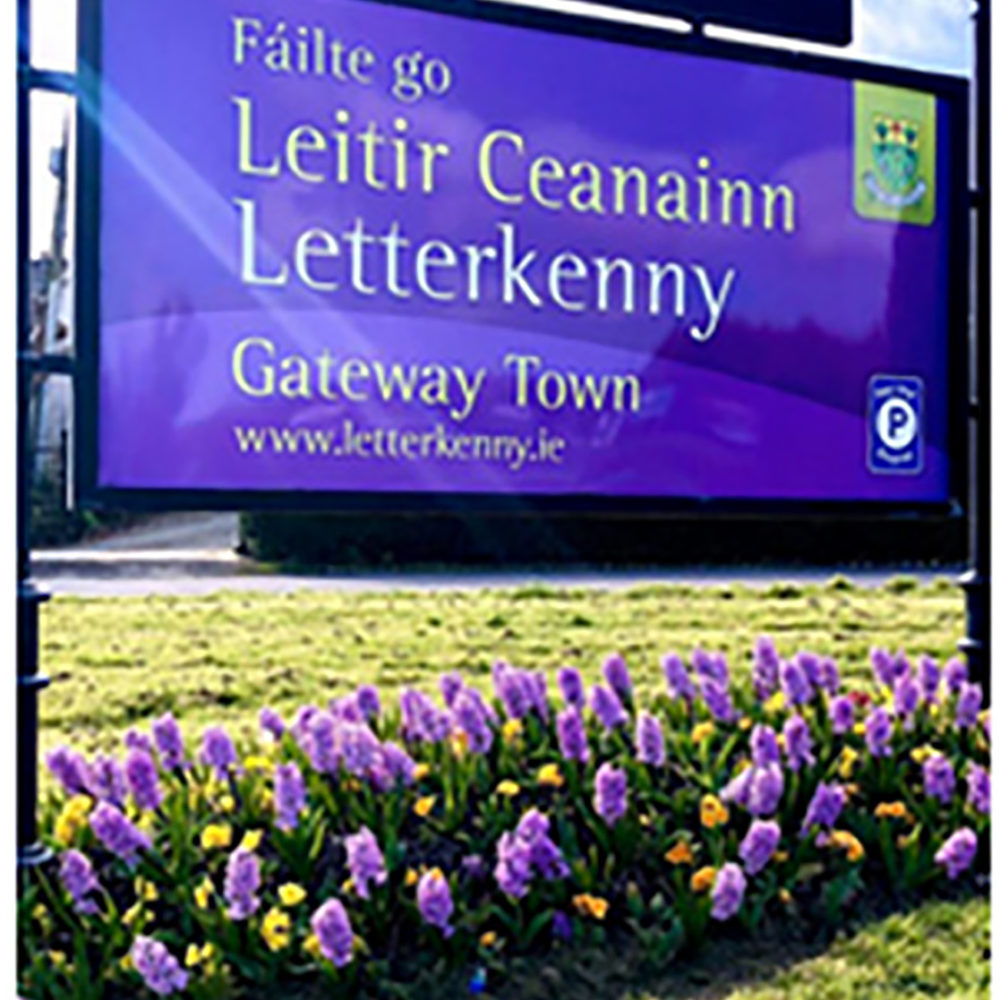
Photo courtesy of @sasa_inthegarden
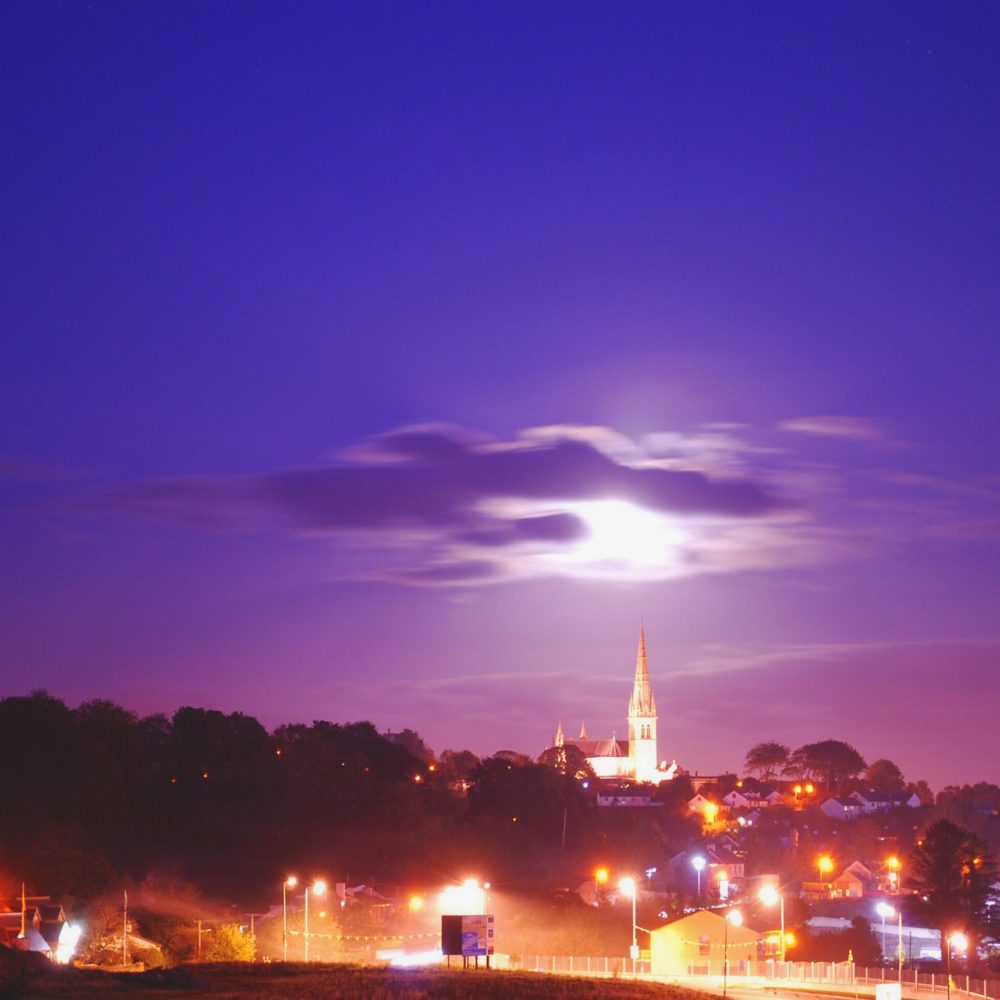
The original town is centred around Main Street, with Market Square being a focal point
The sculpture in Market Square (shown below) commemorates the hiring fairs, also known as ‘Rabble Days’ when both adults and children would be hired by farmers for 6 months to a year.
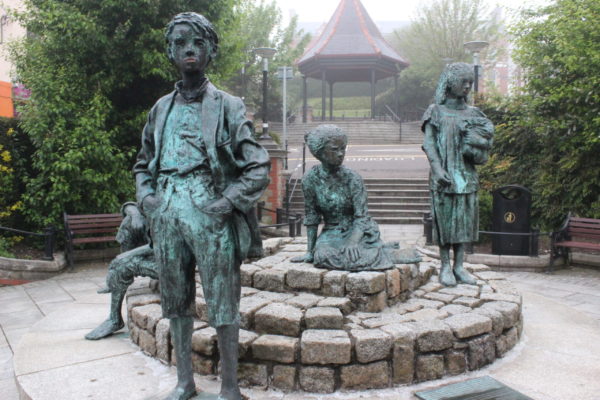
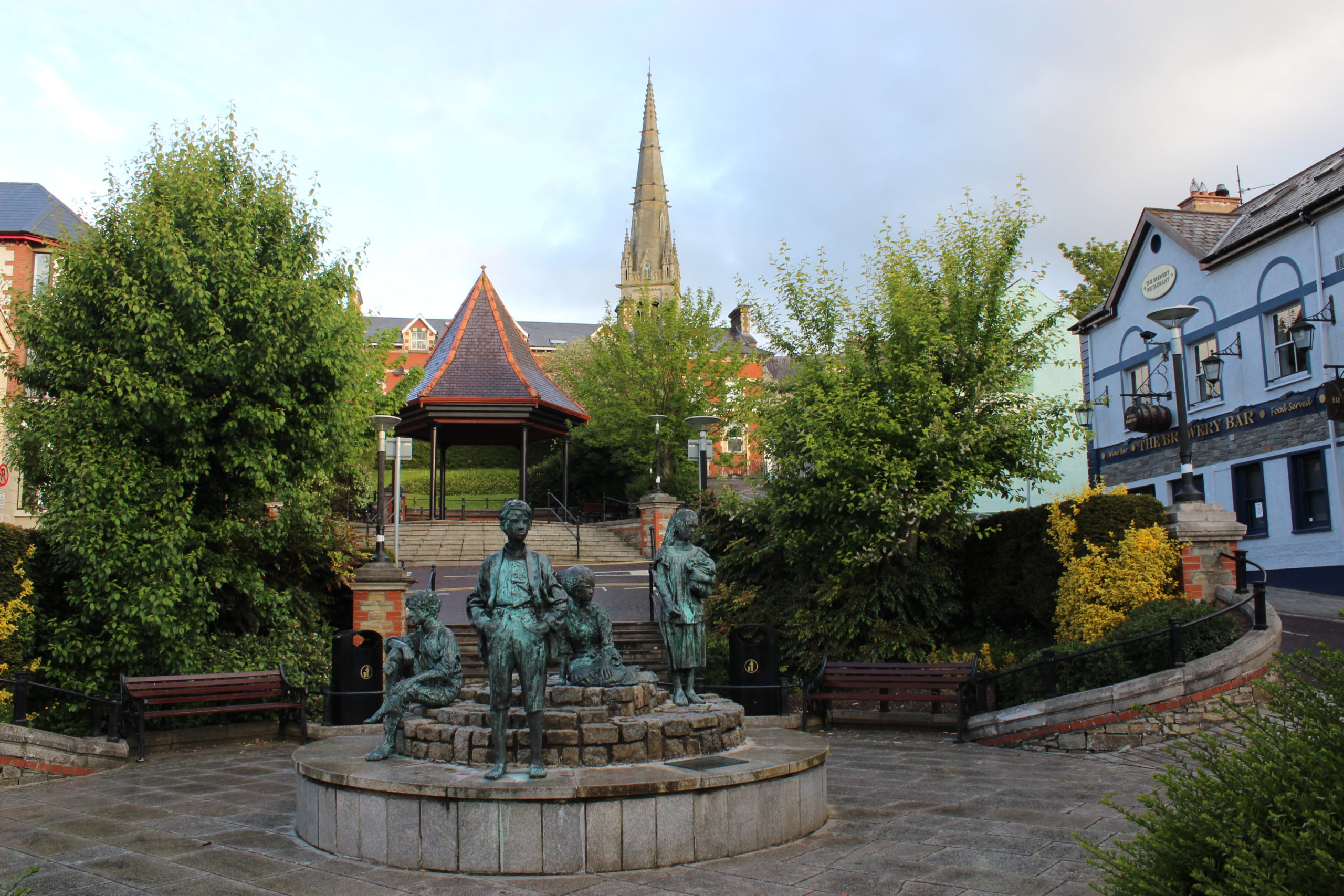
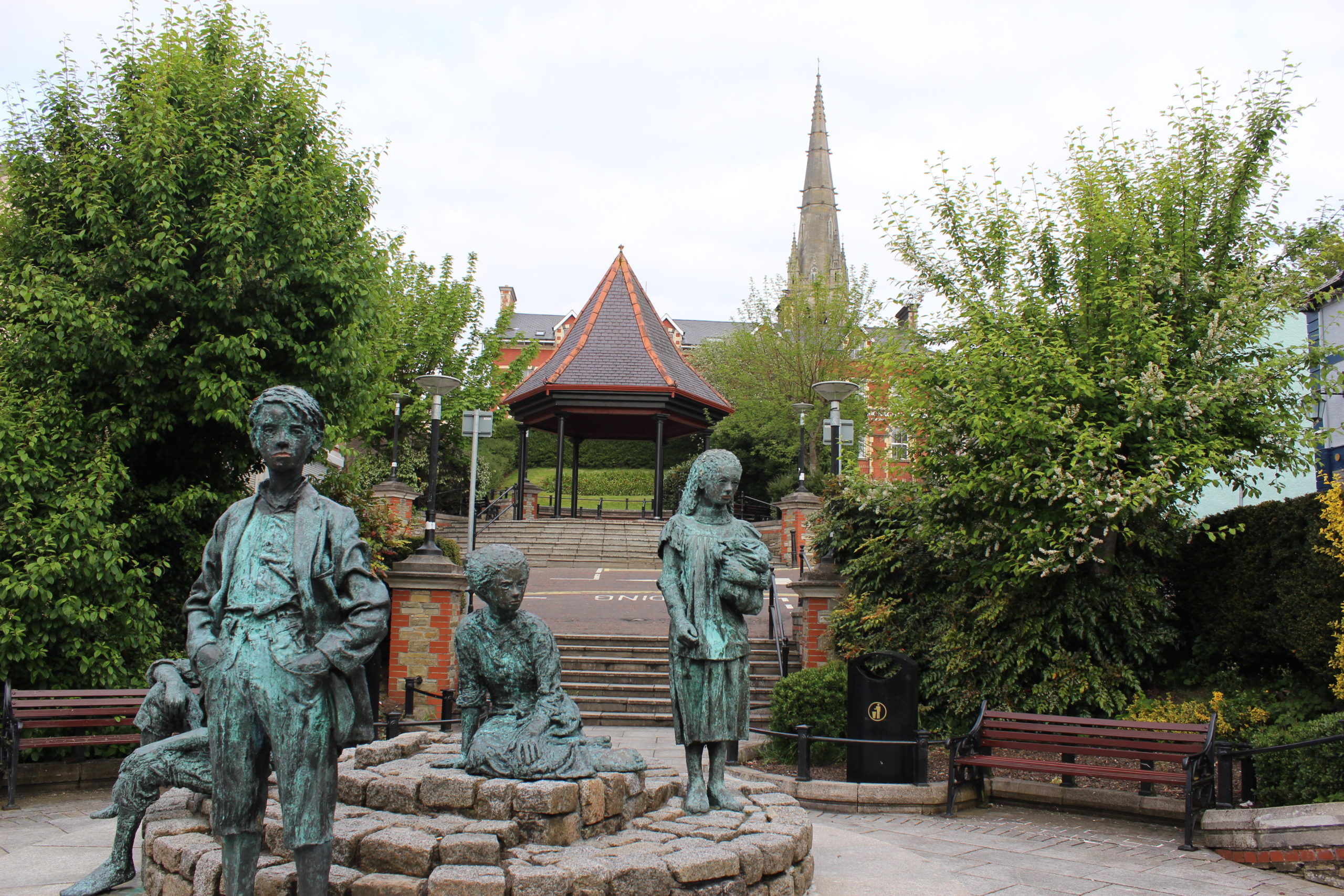
The ‘Hiring Fair’ sculpture in Market Square
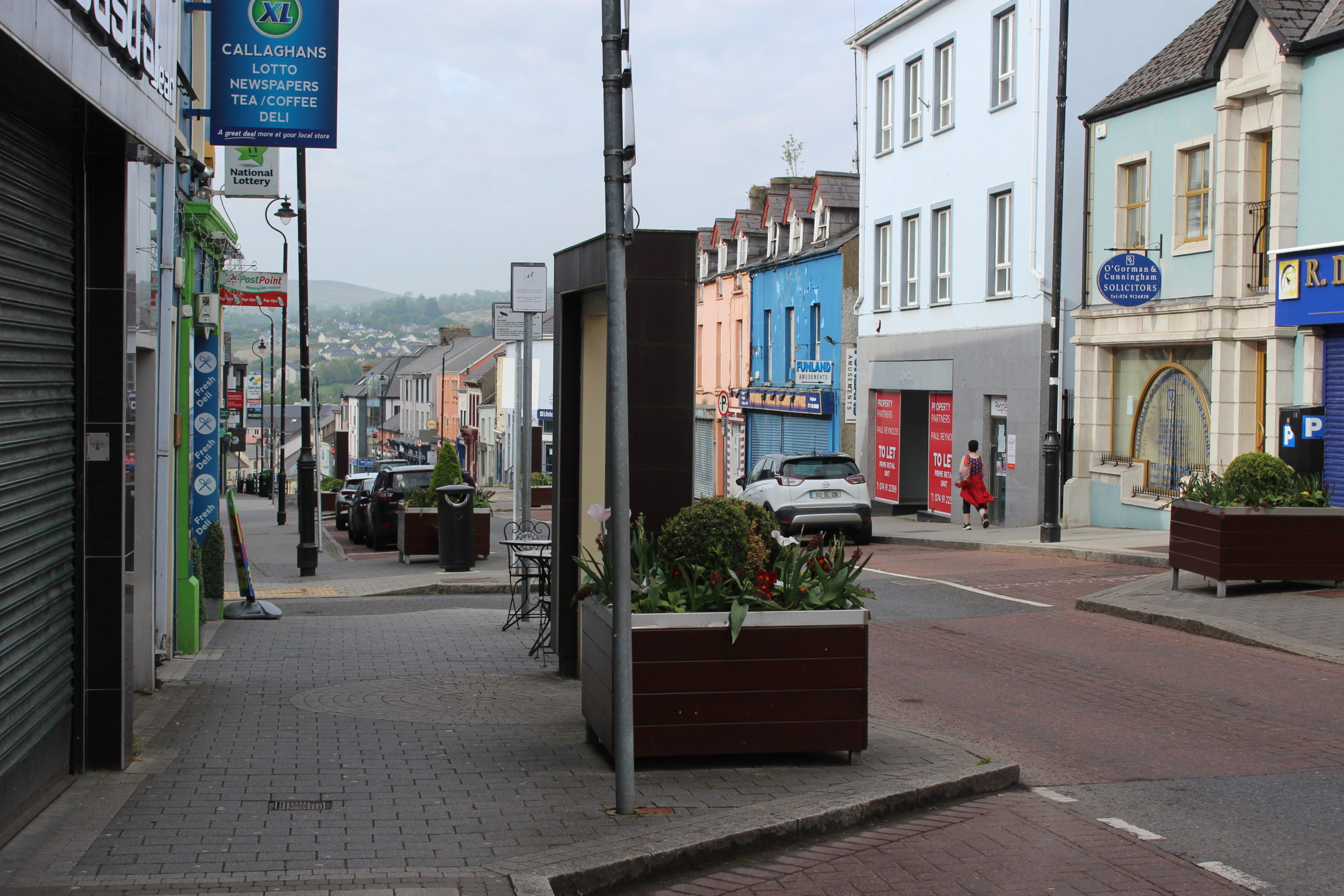
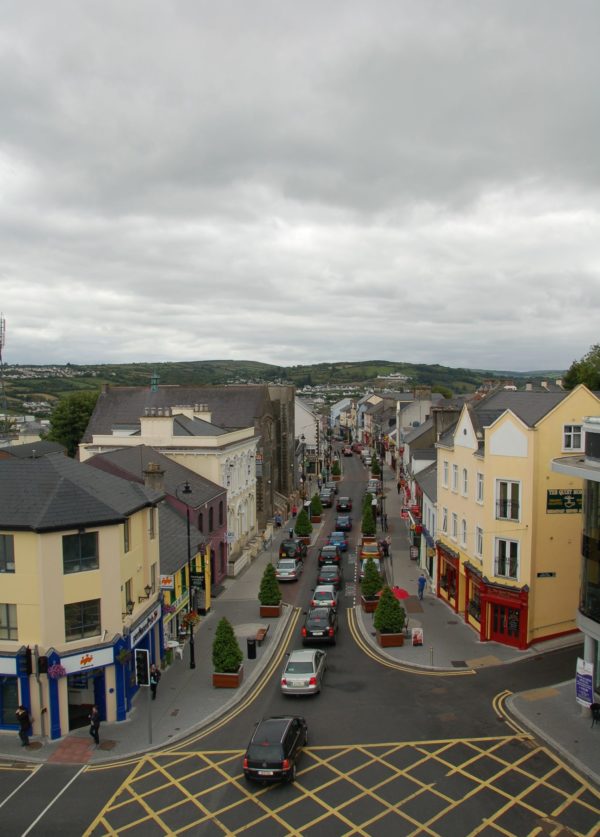
Main Street
There are many notable buildings in the town dating back to the second half of the 19th century or earlier
These include the Cathedral of St Eunan and St Columba, St Eunan’s College, Mount Southwell Terrace (a row of Georgian houses at the top end of the town square) and St Conal’s Hospital. The oldest building in the town is Conwal Parish Church, which dates back to the 17th century.
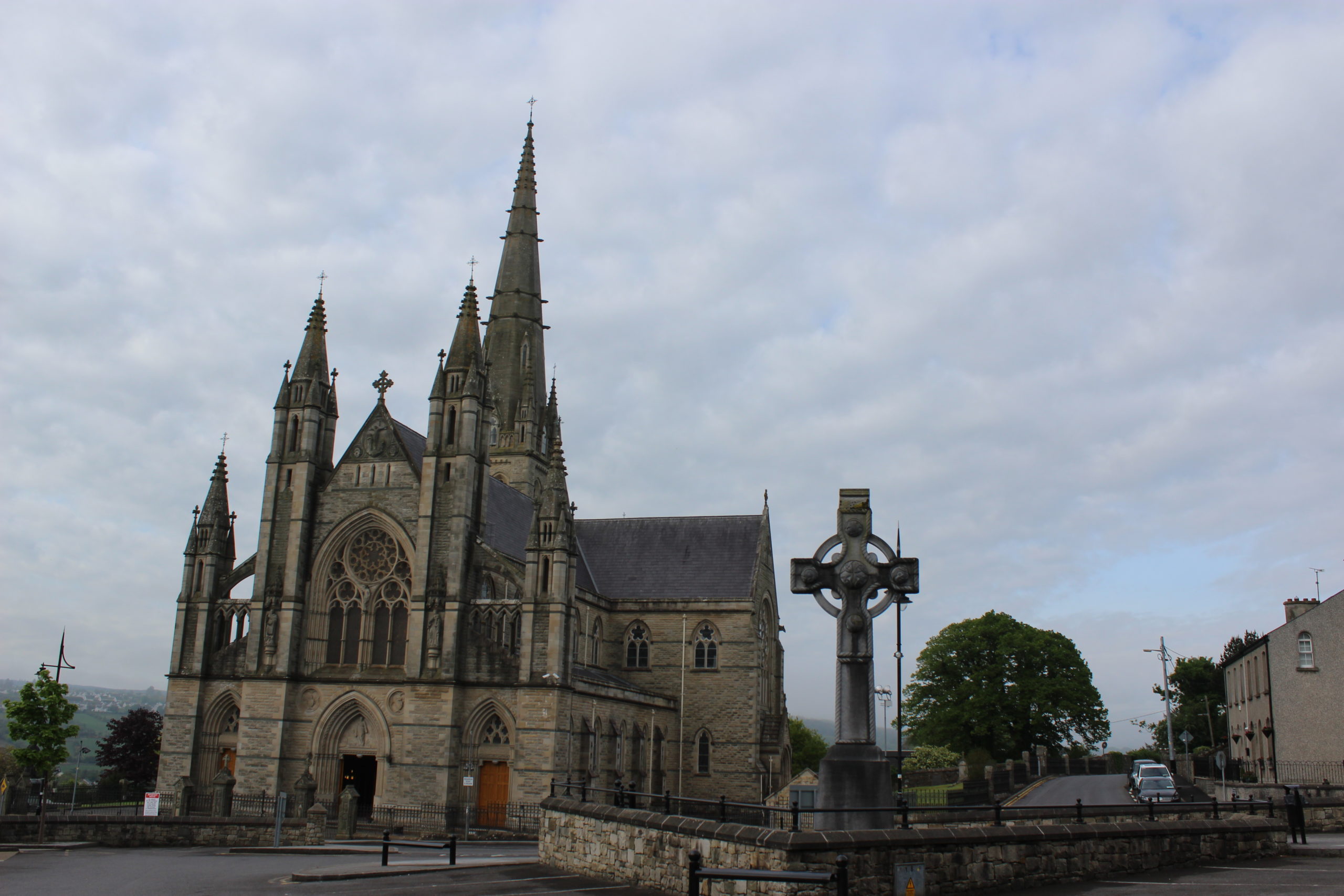
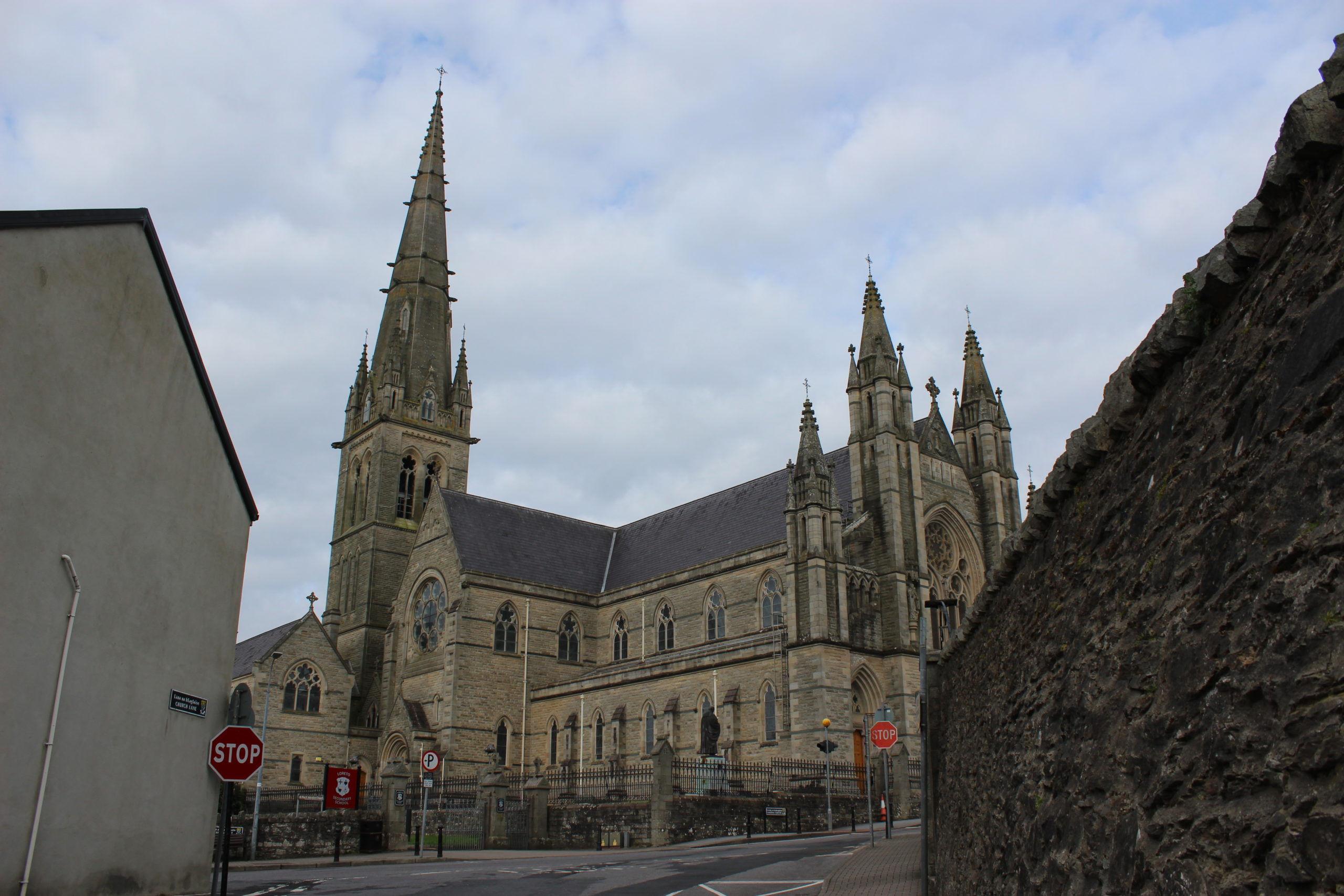
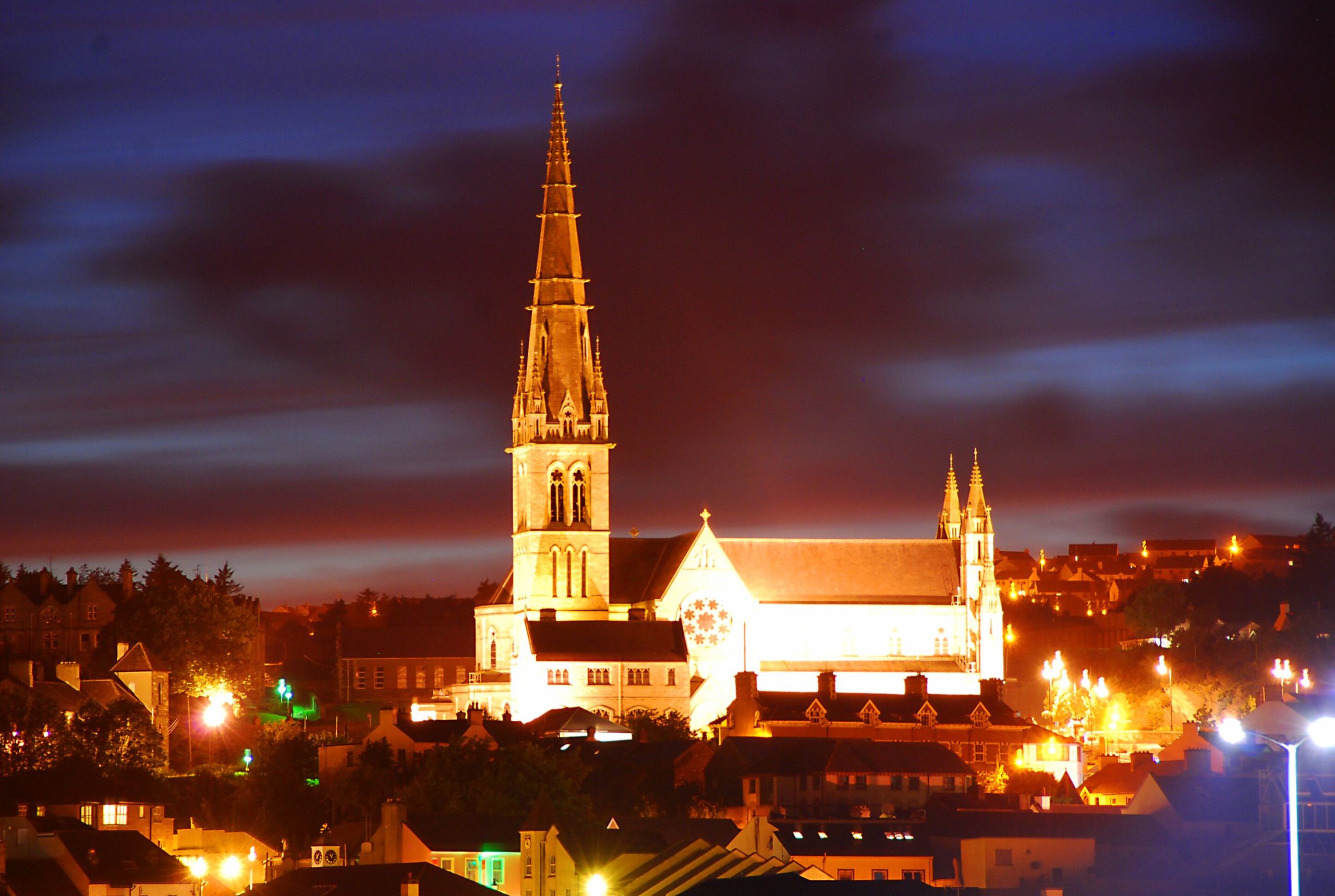
St Eunan’s Cathedral
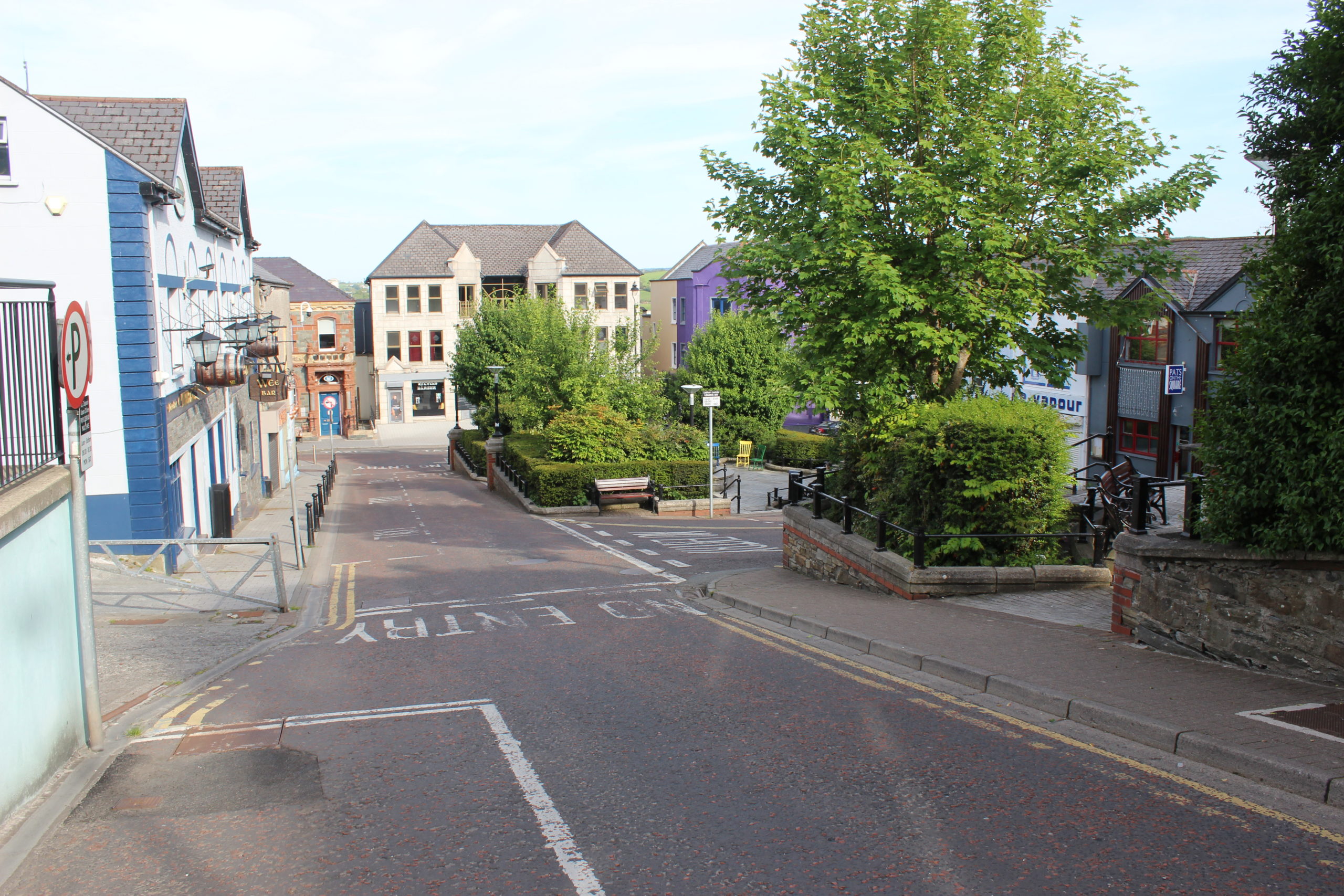
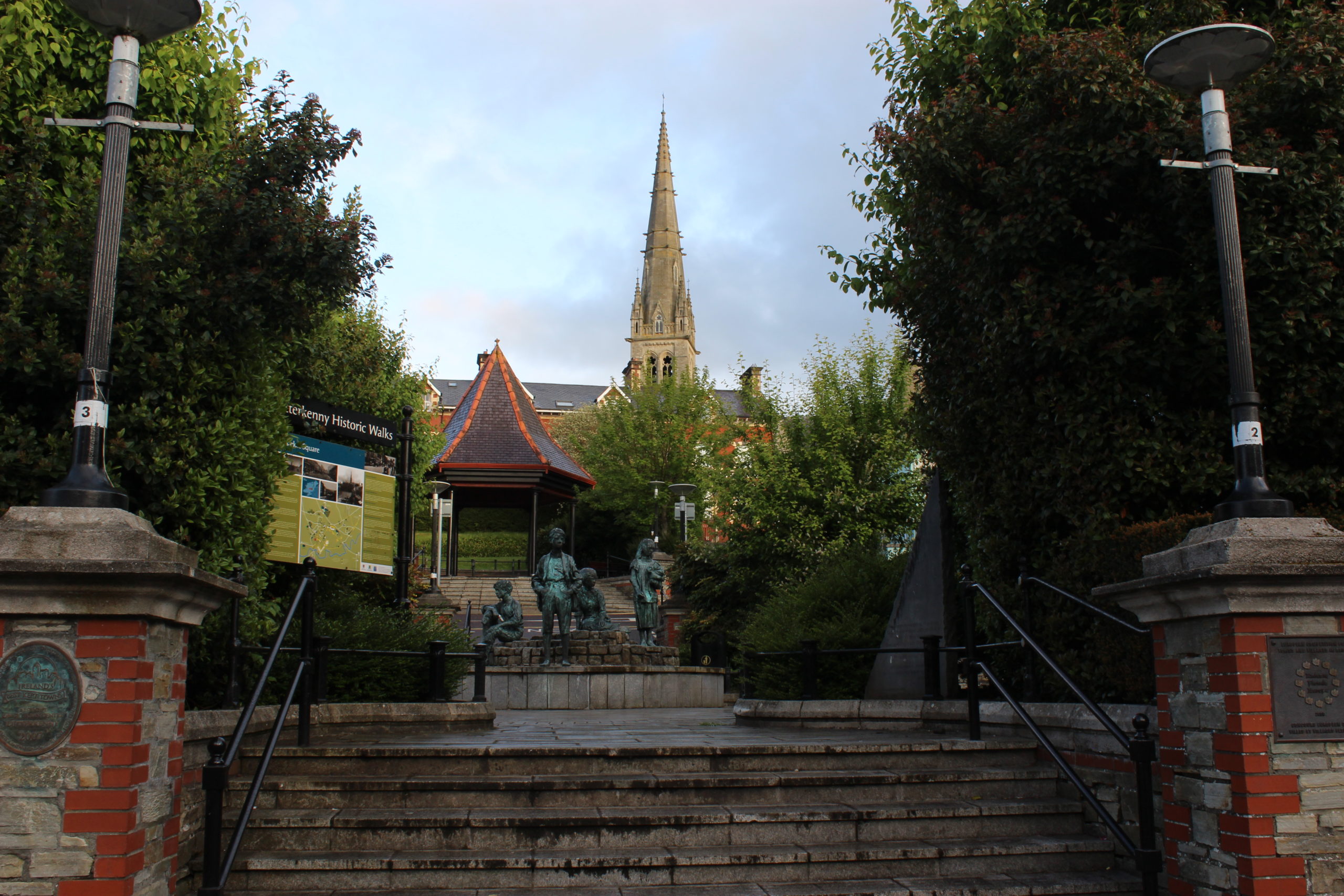
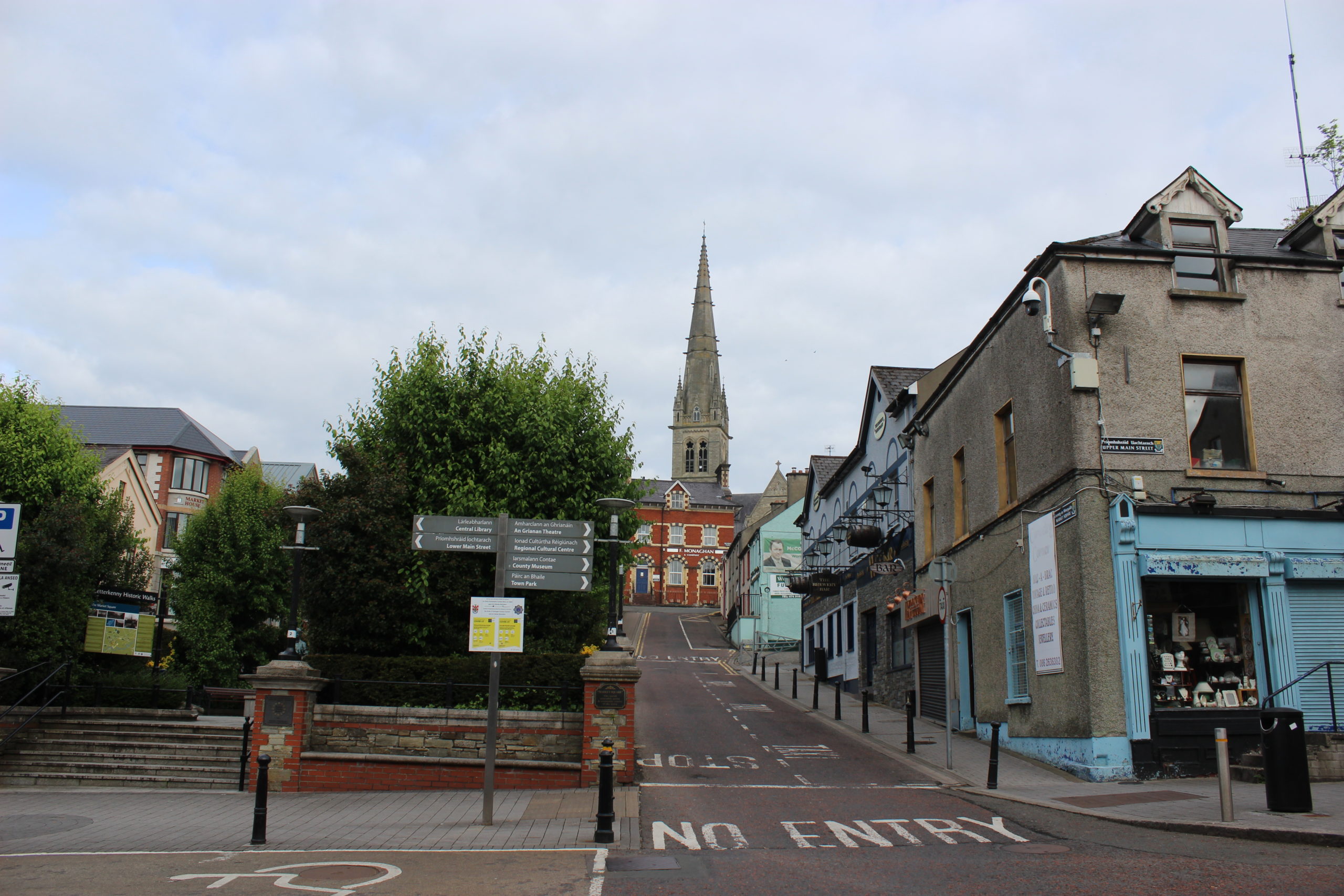
Market Square
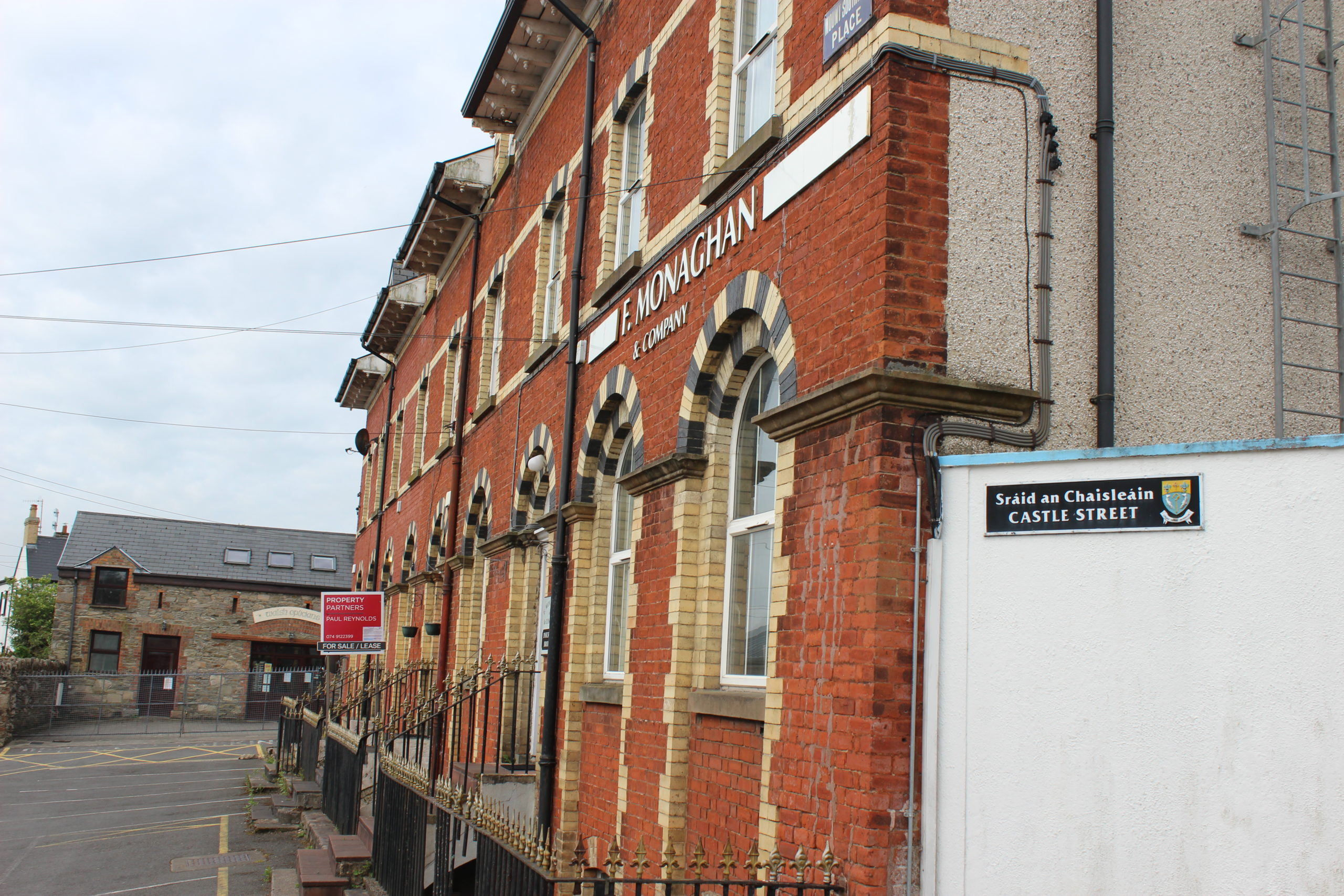
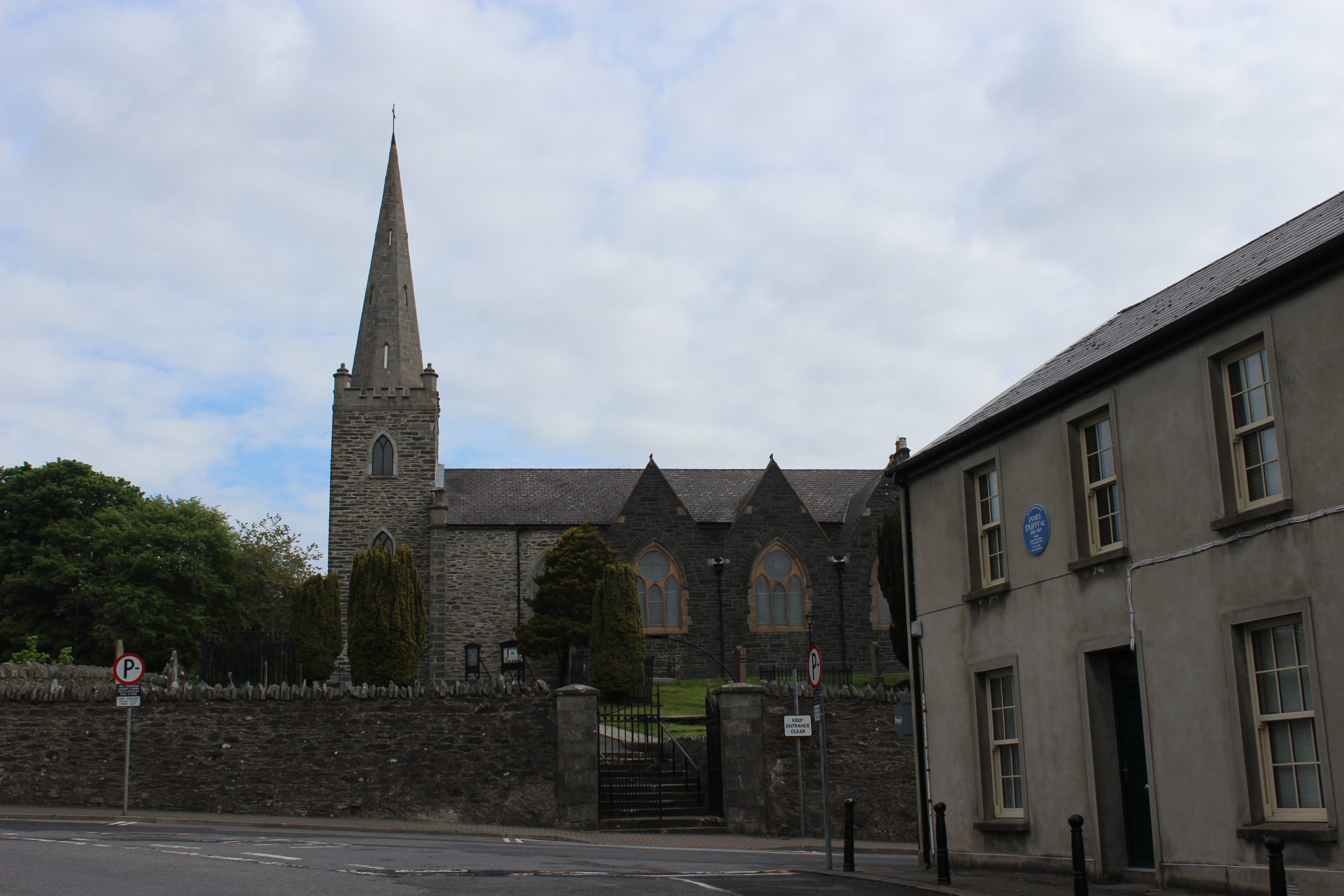
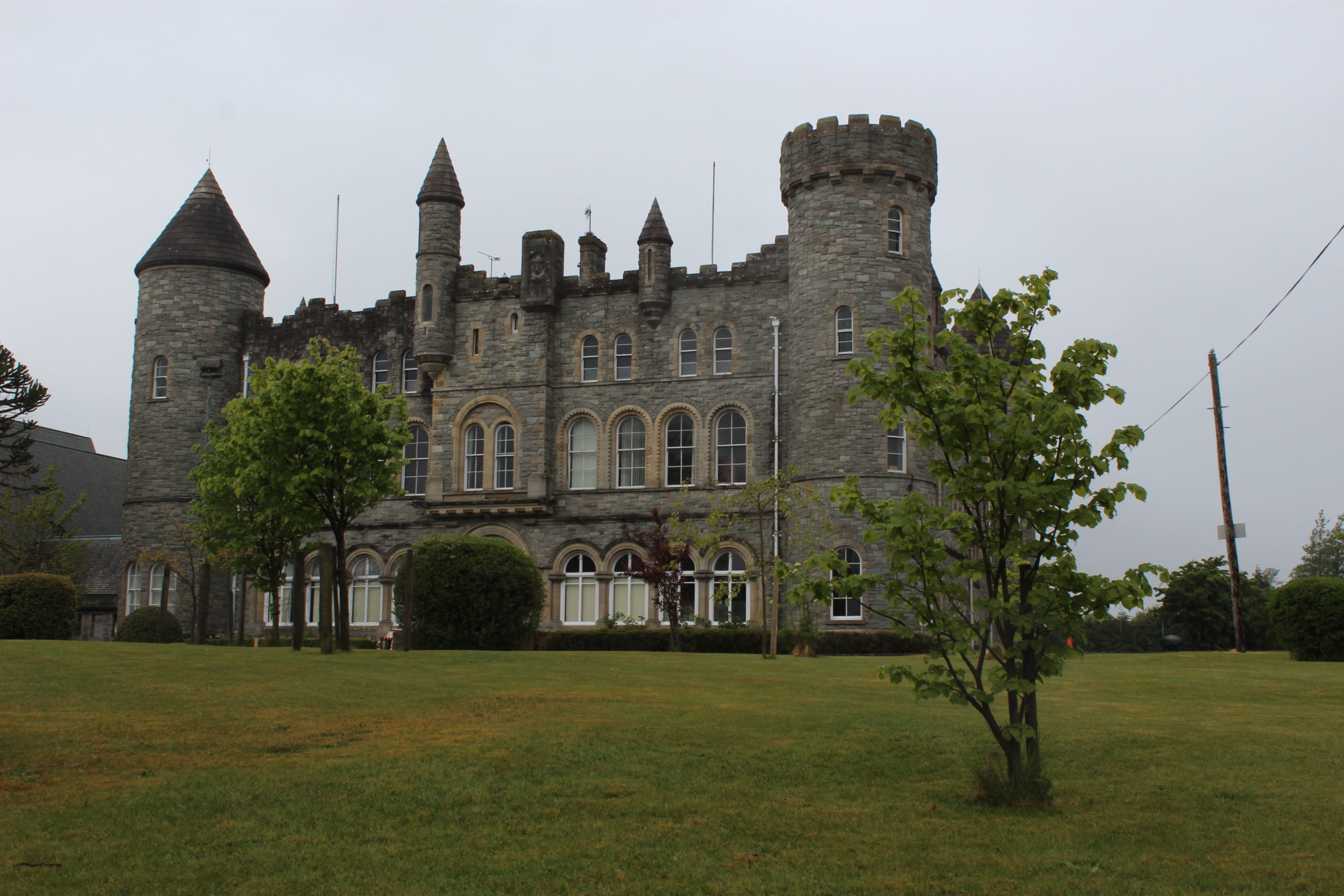
Mountwell Terrace, Conwal Parish Church and St Eunan’s College
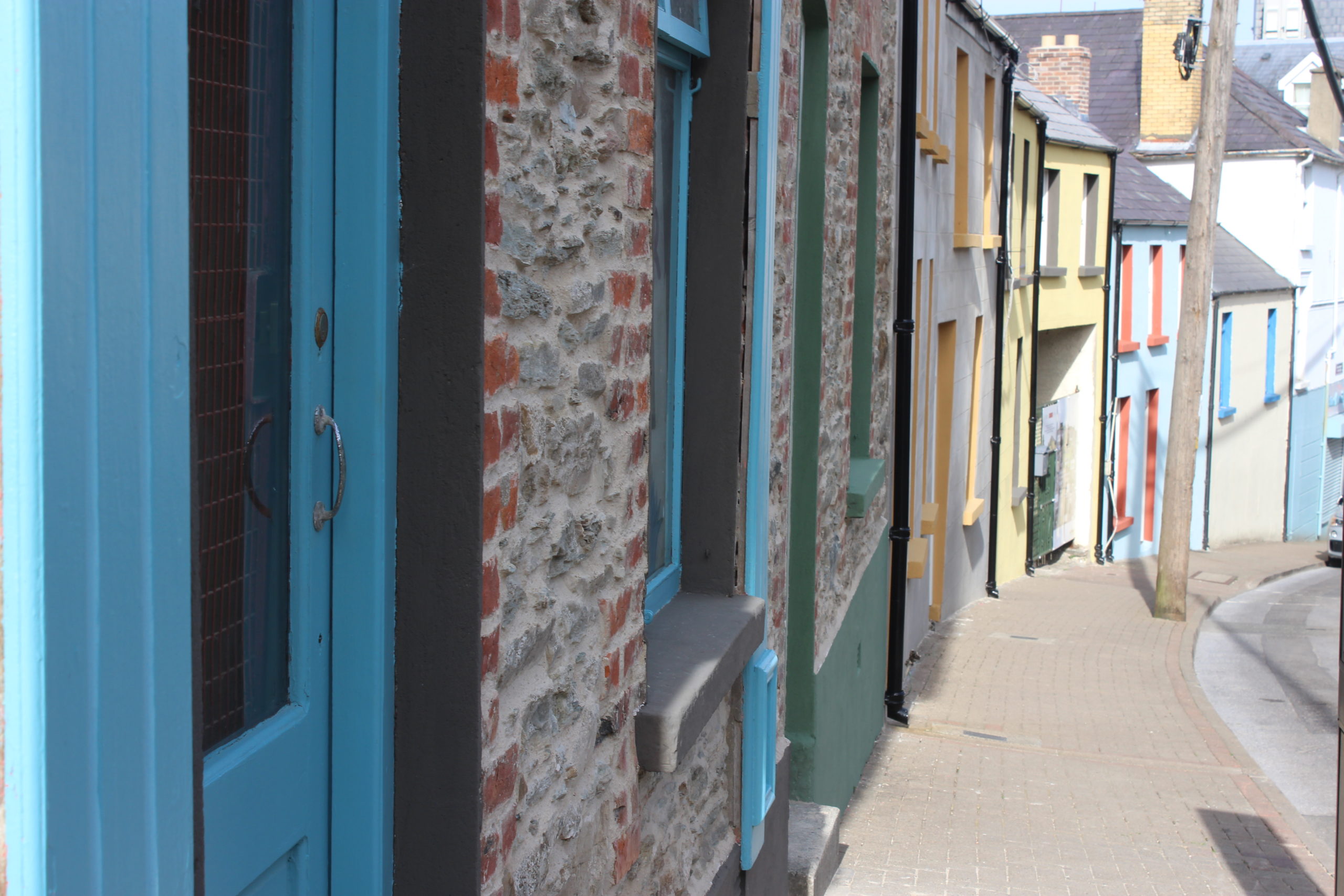
Church Lane
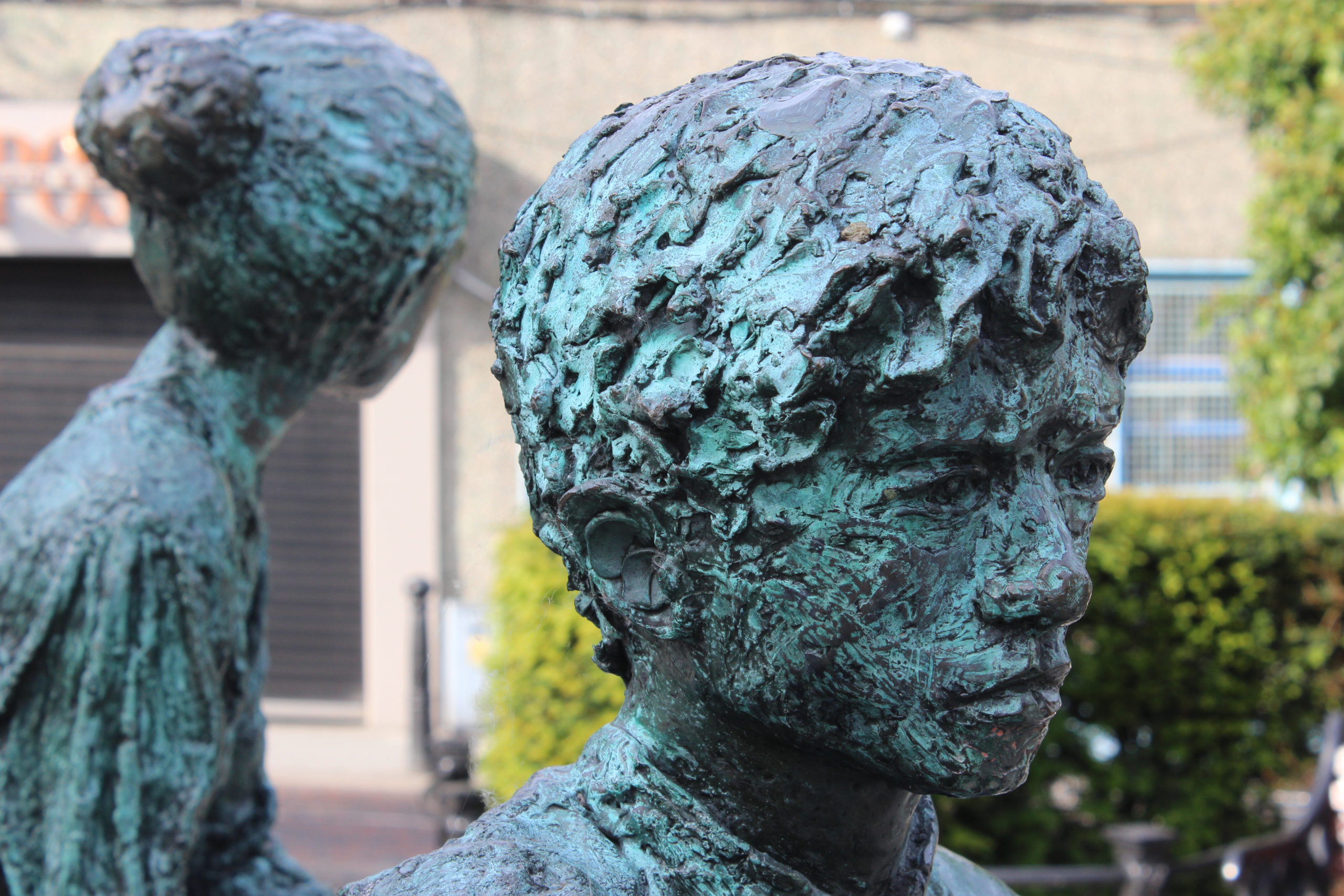
The ‘Hiring Fair’ sculpture in Market Square
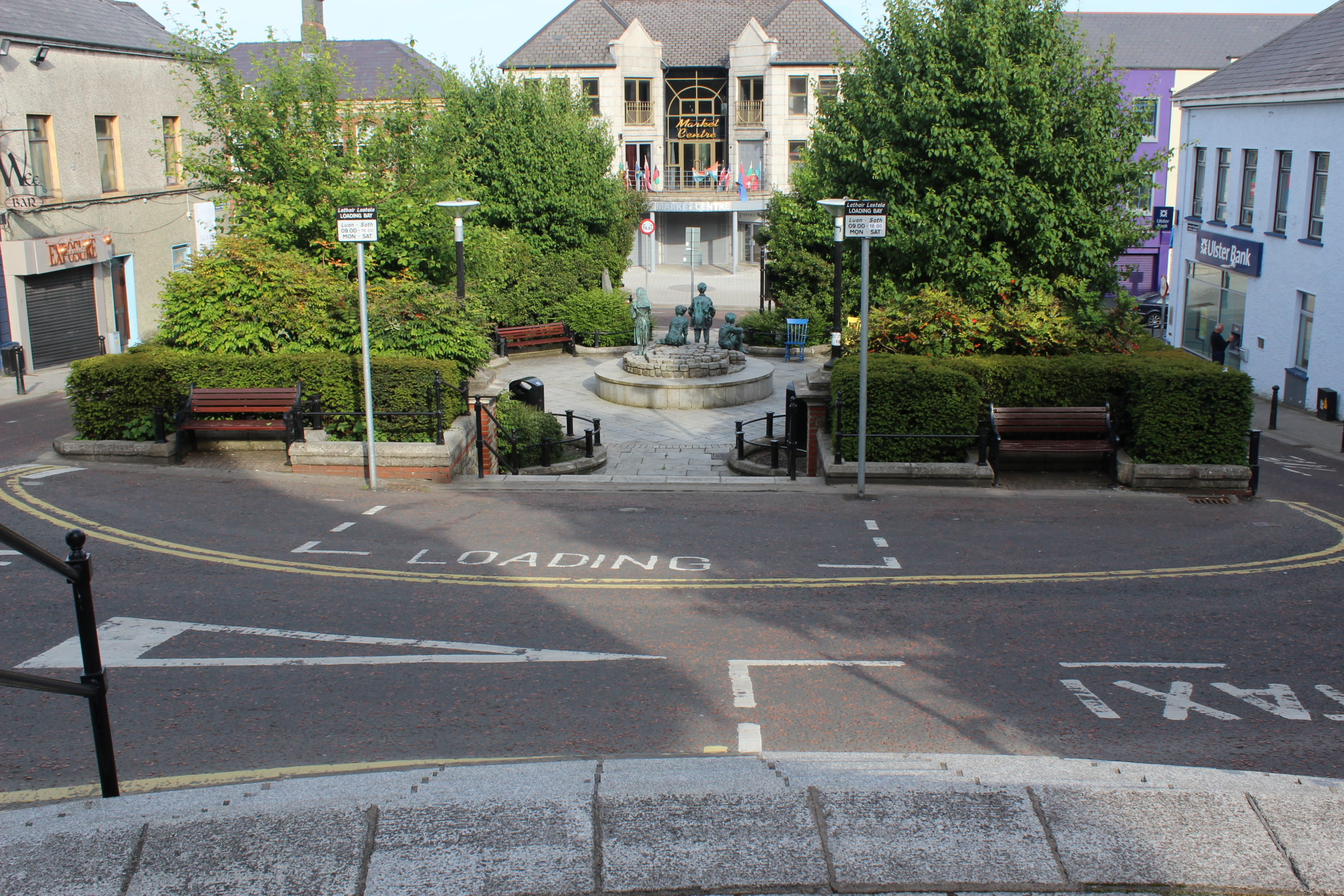
Market Square
The town underwent large-scale expansion during the ‘Celtic Tiger’ years
Relatively rural districts became part of the town and large housing estates grew in all areas. The new areas have largely been designed well for the pedestrian, with wide footpaths and, in some cases, cycle lanes.
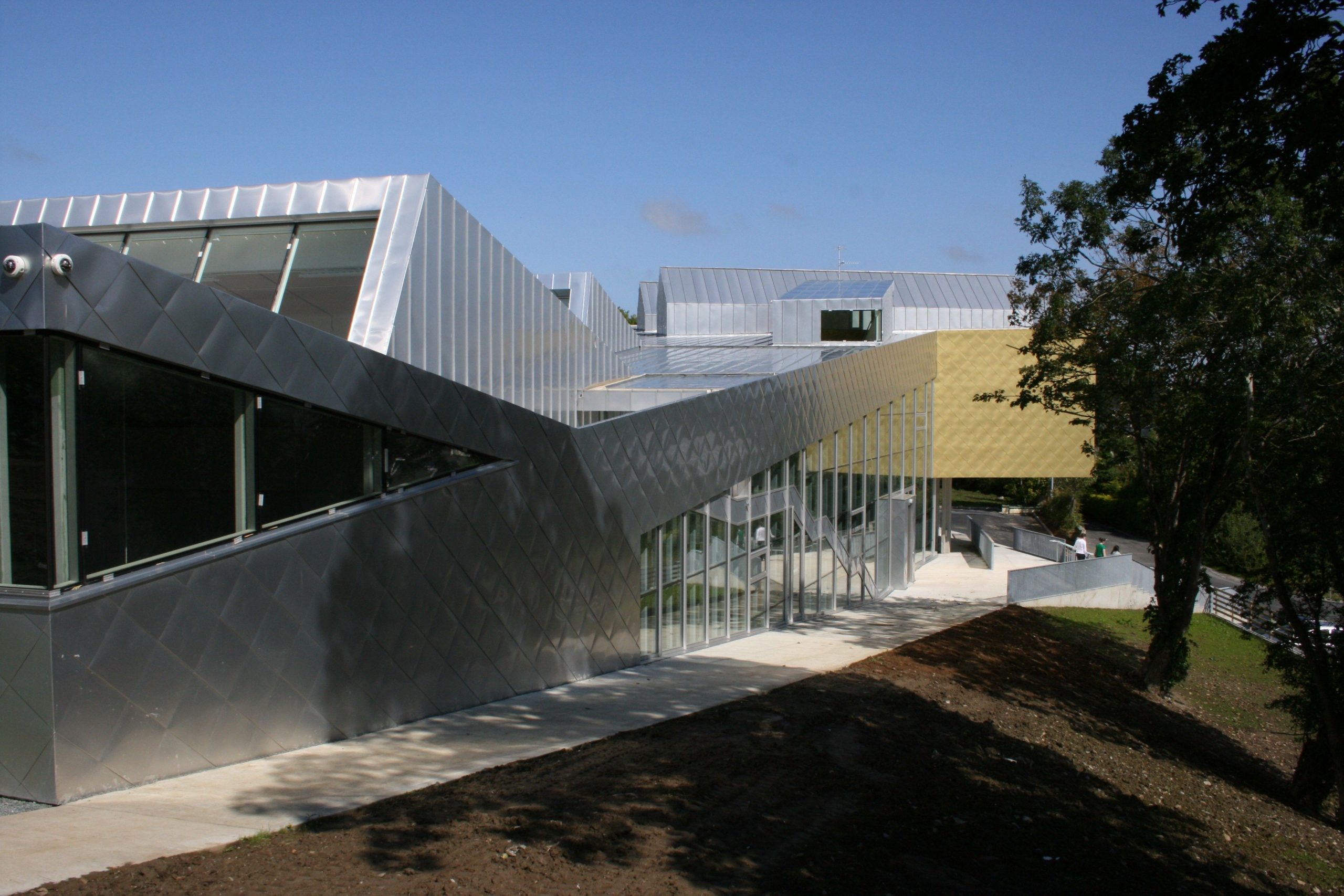
The Regional Cultural Centre
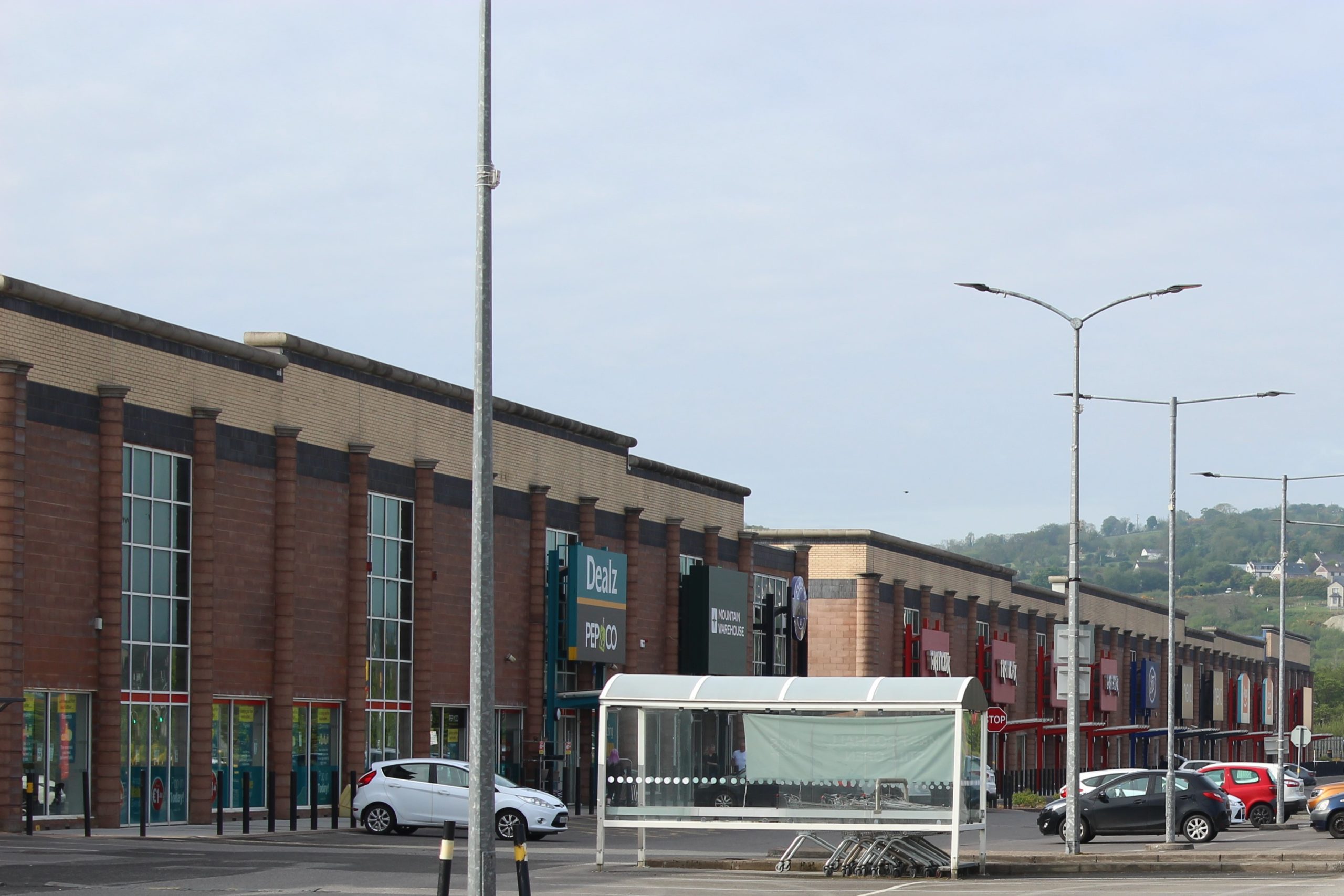
The ‘New Town Centre’
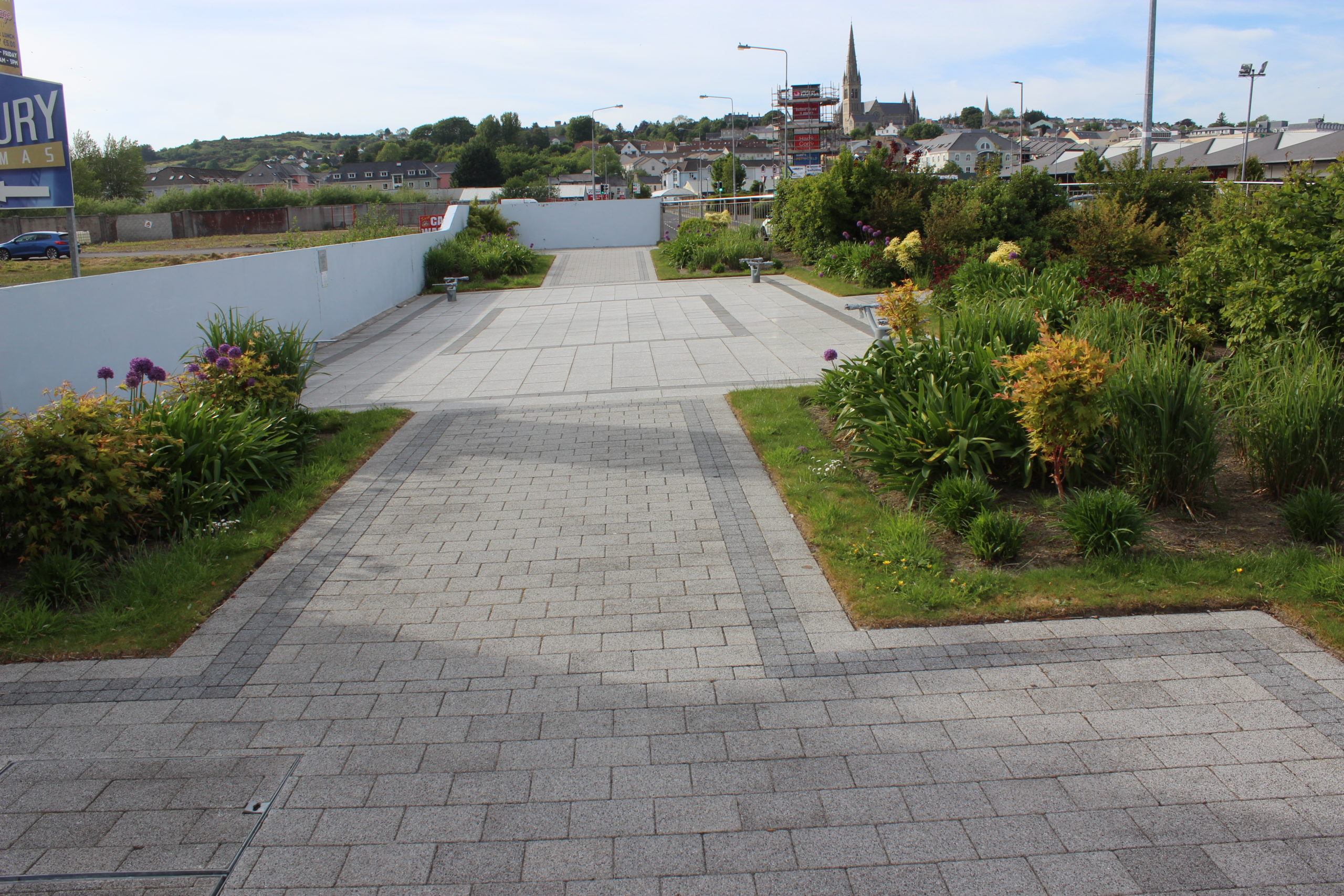
The Jim McCormick Memorial Garden
